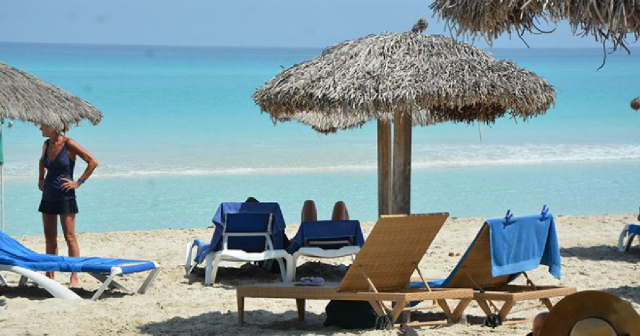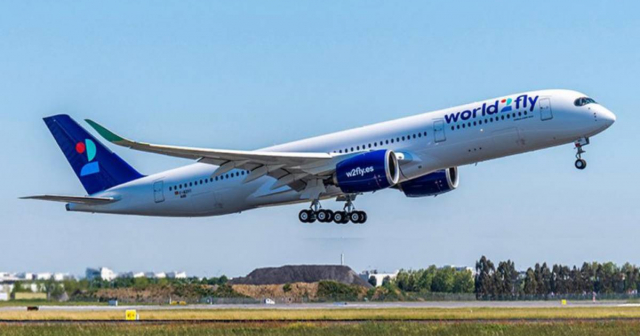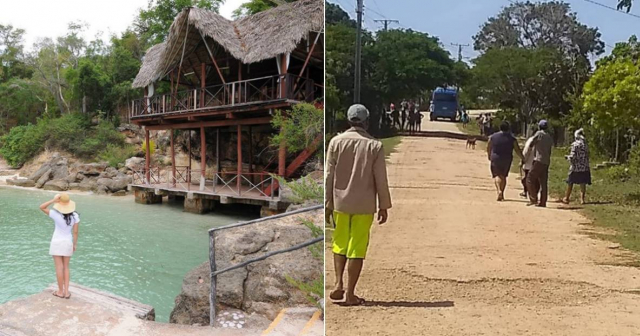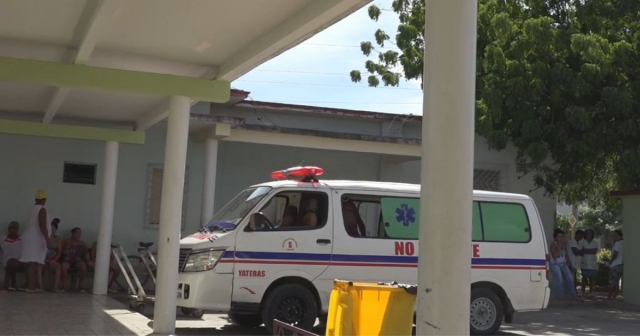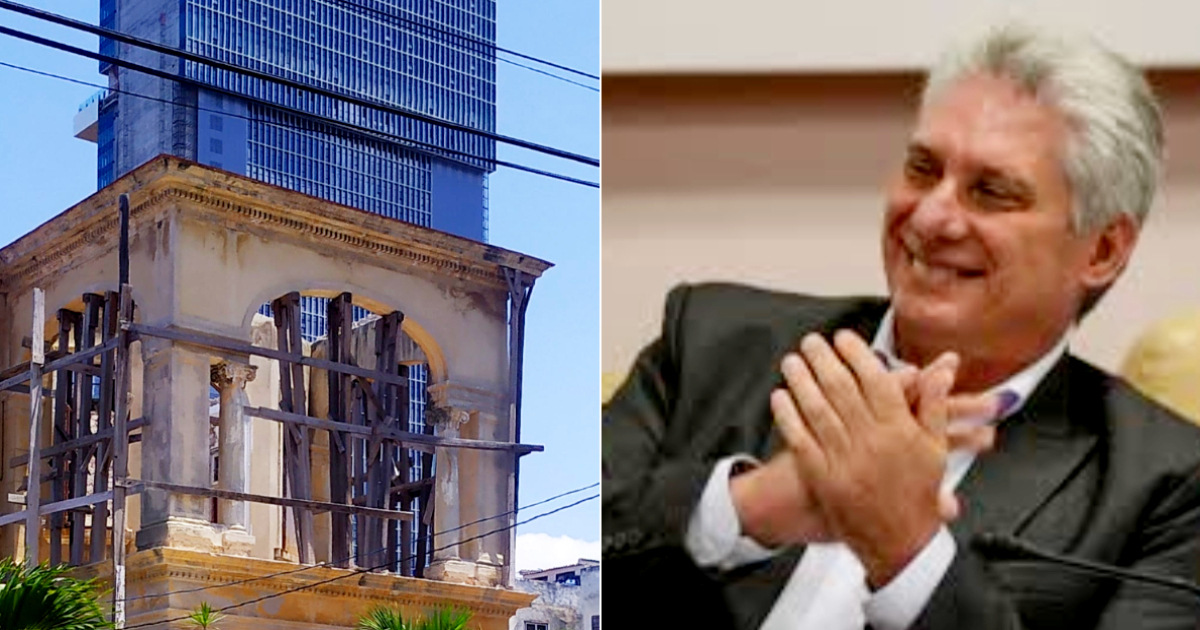
A photograph shared through social networks captured an image of these times in Cuba, in which the government of the so-called “continuity”continues to invest in investments in the opaque tourism sector, while the urban heritage of the capital and the provinces disappears in the midst of chaos and destruction.
The image, taken by the user ofFacebook identified asOmar Fontes Suarez, reveals the hotel being built by the Cuban regime in El Vedado, known as Torre K or “López-Calleja” (after the deceased general who commanded GAESA). The angle chosen for the shot leaves the ruin of a sumptuous building from Republican times in the foreground.
The contrast between uncontrolled hotel investment and the destruction of Cuban urban heritage highlights a symptom of the generalized crisis in Cuba, a country governed by a totalitarian regime for more than 60 years, whose communist and military leadership is becoming increasingly disengaged. of citizen well-being, in favor of sharing the wealth of the Island.
The political project of “continuity”, led by the rulerMiguel Diaz-Canel, hides the privatization of economic sectors and their assets. After the pedestrian propaganda of “leaving no one behind”, the Palace's maneuvers are being developed to favor the emergence of a new business and wealthy class that responds to its interests of perpetuating itself in power.
This is why the Cuban regime continues to expand its tendency to invest more in hotels and restaurants than in Public Health and Social Assistance. Through his “straw man”, the retired general and dictator,Raul Castro (and hisfamily), continues with the feast that investment in tourism represents for the coffers of the military and senior officials of the regime.
A report from the National Office of Statistics and Information (ONEI) itself noted that in the first half of 2023, the Cuban dictatorship invested four times more in hotels and restaurants than in public sectors such as health and social assistance.
On the other hand, schools, hospitals and transportation - among other public services - fall into the abyss, missing from the national budget, which the State prepares based on national wealth with public money.
While the investment from January to June (2023) in health and social assistance was only 583.3 million pesos, the construction and provisioning of hotels and restaurants received an injection of 2,325.3 million pesos, according to data from the official ONEI .
In Cuba, the sum of investment in “hotels and restaurants” and “business and real estate services” concentrates 30.6% of national investment, according to the economist.Pedro Monreal, who stated that the data “confirm the persistence of a deformed investment structure in Cuba,” which prioritizes “activities mainly articulated around tourism, despite the notable difficulties in attracting tourists.”
Monreal warned that prioritizing investment in tourism to the detriment of basic sectors aimed at the population is wrong and will have, in the long run, a significant political cost.
Receiving 2.5 million international visitors in 2022, in Cuba there would be a little more than half of the hotel rooms “left over” (69 tourists rotating per room in 2018 vs. 32 in 2022), so it would be prudent to take a “pause” in hotel investment to attend to "other priorities," the economist said last year.
Initially scheduled to open in 2022, Tower K is 154 meters high and has 42 floors, with a total of 565 rooms that will have the five-star category for its new opening date (2024).
With a 100% Cuban investment, carried out by GAESA and of which the real amount is unknown, the hotel will be operated by the Spanish company Iberostar, which already has three hotels in the Cuban capital, along with another 19 hotels in the remaining main ones. tourist destinations in the country, such as Varadero, Cayo Guillermo and Holguín.
At the same time, the housing crisis in Cuba only worsens, with a stagnant housing deficit that is only mentioned in the speeches of leaders to promise solutions that never arrive.
With the appointment of the ruler Díaz-Canel in 2018, Castro guaranteed that theGrupo de Administración Empresarial S.A. (GAESA), remained controlling more than 70% of the country's dollarized economy, and continued opaquely appropriating all businesses related to imports and tourism in Cuba, among others.
In that year, the “continuity” government of Díaz-Canelpromised to overcome the deficit of almost a million homes in 10 years (of which about 527,000 had to be built and another 402,000 rehabilitated). Three years later, according to government data, lthe housing goddess is numbered at 862,879.
The rate of investment in housing has continued to decrease while that of infrastructure for tourism has increased.
Havana and other cities in the country are falling apart, families living among ruins feel abandoned, the number of homeless and vulnerable people is growing, inflation has left millions of Cubans in extreme poverty... but there it is the K Tower to remind Cubans how much the paunchy leaders of the so-called “revolution” care.
What do you think?
COMMENTFiled in:

